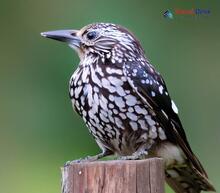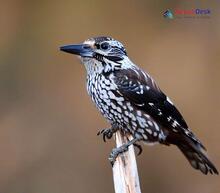Nutcrackers, scientifically known as the Nucifraga genus, are a captivating group of passerine birds belonging to the Corvidae family. Bird enthusiasts and ornithologists are drawn to these remarkable creatures due to their one-of-a-kind traits and behaviors. This article explores their origin, evolutionary development, genetic relationships, species list, special characteristics, and their sightings in Nepal.
Delving into the Nucifraga Genus' Origin and Evolution
The nutcracker birds had their beginnings in the Palearctic region – an ecozone that spans Europe, Asia north of the Himalayas, northern Africa, and central parts of the Arabian Peninsula. They evolved and diversified over millions of years to adapt to various environments within temperate forests and mountainous areas.
Genetic Connections
Studying the genetics of nutcrackers gives us fascinating insights into their evolutionary links. By examining molecular data from mitochondrial DNA and nuclear genes, experts have managed to piece together their phylogeny. The research indicates two primary groups within the Nucifraga genus: one group consisting of the large-spotted nutcracker (N. multipunctata) and the spotted nutcracker (N. caryocatactes), while the other encompasses all other species.
Species Breakdown and Traits
At present, three species are recognized within the Nucifraga genus:
1. Eurasian Nutcracker (Nucifraga caryocatactes) – This widespread bird can be found throughout Europe and Asia, easily identified by its dark brown feathers with white spots and streaks. Their powerful bills are perfect for breaking open tough nuts like hazelnuts, acorns, chestnuts, and pine nuts.
2. Clark's Nutcracker (Nucifraga columbiana) – Exclusive to North America, this species boasts a black bill with white plumage around the eyes and gray wings and body. What's remarkable about them is their keen spatial memory and hoarding habits, storing as many as 30,000 pine seeds in a single season for later consumption.
3. Large-spotted Nutcracker (Nucifraga multipunctata) – Native to central China, this bird stands out with its bigger white spots and darker plumage. It primarily inhabits coniferous forests.
Sightings in Nepal
Though the Nucifraga genus is not native to Nepal, winter months occasionally bring sightings of the Eurasian nutcracker (N. caryocatactes). They usually dwell in high-altitude coniferous forests, seeking seeds and nuts.
In conclusion, nutcrackers provide a fascinating look into the world of passerine birds with their unique traits and behaviors. Their presence in Nepal showcases their adaptability to various environments and offers birdwatchers an intriguing species to observe in nature. As we continue to study these amazing creatures, we deepen our understanding of their ecology, evolution, and conservation requirements.




